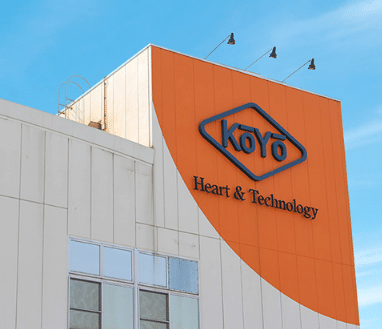
Introduction:
Vibration analysis and bearing health monitoring are critical aspects of machinery maintenance and reliability. Monitoring the condition of bearings can help detect early signs of wear, damage, or impending failure, allowing for timely maintenance and preventing costly downtime. KOYO and NACHI, two reputable bearing manufacturers, offer solutions with features designed for effective vibration analysis and bearing health monitoring. This article provides a comprehensive comparison of KOYO and NACHI bearings in terms of their suitability for vibration analysis and bearing health monitoring, emphasizing their performance, sensor compatibility, and monitoring capabilities.
- Sensitivity to Vibration:
KOYO Bearings:
KOYO’s precision manufacturing and material quality contribute to the low vibration levels of their bearings. This low inherent vibration allows for more accurate monitoring of external vibrations and potential issues.
NACHI Bearings:
NACHI also places a strong emphasis on precision engineering, resulting in bearings with minimal inherent vibration. Their low-vibration bearings provide a stable platform for effective vibration analysis.
- Compatibility with Vibration Sensors:
KOYO Bearings:
KOYO bearings are often compatible with a wide range of vibration sensors and monitoring systems. This compatibility simplifies the integration of monitoring solutions.
NACHI Bearings:
NACHI offers bearings that are designed to work seamlessly with various vibration sensors and monitoring equipment, facilitating straightforward implementation.
- Sensor Mounting and Accessibility:
KOYO Bearings:
KOYO may provide bearings with features that enhance sensor mounting and accessibility, ensuring that sensors can be securely attached for accurate data collection.
NACHI Bearings:
NACHI’s bearings may also incorporate design elements that facilitate sensor installation, making it easier for maintenance professionals to monitor bearing health.
- Data Accuracy and Monitoring Capabilities:
KOYO Bearings:
KOYO’s low-vibration bearings and compatibility with advanced monitoring systems contribute to the accuracy of data collected during vibration analysis. This accuracy is crucial for early fault detection.
NACHI Bearings:
NACHI’s focus on precision engineering and sensor compatibility ensures that monitoring data is reliable and comprehensive, supporting effective bearing health analysis.
- Condition Monitoring Services:
Both KOYO and NACHI may offer condition monitoring services that complement their bearings. These services may include data analysis, remote monitoring, and predictive maintenance support.
- Environmental Responsibility:
Both manufacturers prioritize environmentally responsible manufacturing practices, contributing to reduced environmental impact and sustainable production methods.
Conclusion:
Vibration analysis and bearing health monitoring are essential tools for proactive maintenance and ensuring the reliability of machinery and equipment. The suitability of bearings for these applications is crucial for accurate and early detection of potential issues.
KOYO and NACHI bearings have demonstrated their capabilities in providing high-quality, low-vibration solutions that are compatible with various monitoring systems. Their commitment to precision engineering, material quality, and sensor compatibility aligns with the needs of industries that rely on effective vibration analysis and bearing health monitoring.
When selecting between KOYO and NACHI bearings for vibration analysis and bearing health monitoring, consider factors such as sensor compatibility, data accuracy, and the specific requirements of your monitoring system. Both manufacturers prioritize the reliability and performance of their bearings, making them trusted choices for industries where bearing health is paramount.
Ultimately, the goal is to choose the bearing that provides the best balance between vibration analysis and bearing health monitoring capabilities, ensuring that machinery operates reliably and efficiently while minimizing the risk of unexpected downtime.


